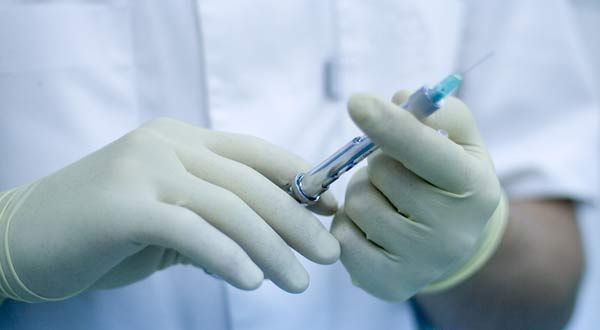Too Few Adults Get Recommended Shots

More adults are getting vaccinated against human papillomavirus (HPV) and whooping cough, according to a new report from the Centers for Disease Control and Prevention (CDC). However, as a whole, adults aren't doing a good job at keeping up to date with recommended shots, the CDC said.
Besides the flu shot, there are nearly a dozen vaccines recommended for adults, the CDC says. Coverage rates for most adult vaccines, including vaccination with the herpes zoster (shingles) vaccine, the pneumococcal vaccine, and the hepatitis A and B vaccines, are low, and have seen little to no change in recent years.
"Far too few adults are being vaccinated against these important diseases," said Dr. Howard Koh, assistant Secretary for Health at the U.S. Department of Health and Human Services (HHS). "We're encouraging all adults to talk with their health care provider about which vaccines are appropriate for them."
In the new report, the biggest improvements in vaccination rates were seen among young women receiving the HPV shot.
In 2011, nearly 30 percent of women ages 19 to 26 said they had received at least one dose of the HPV vaccine, up from about 21 percent in 2010, the report said. Among men in this age group, 2.1 percent had received the shot in 2011, up from 0.6 percent in 2010. HPV vaccination is primarily recommended for girls and boys ages 11 to 12, but is also recommended for women up to age 26 and men up to age 21 who did not receive the shot when they were younger.
Between 2010 and 2011, the percentage of adults who reported receiving the "Tdap" vaccine (which protects against tetanus, diphtheria and whooping cough, also called pertussis) increased from 8.2 percent to 12.5 percent, the report said. The CDC recommends Tdap vaccines for adults in place of a tetanus booster, especially those who expect to have close contact with infants, and pregnant women.
But improvements in vaccination rates for other adult vaccines were limited.
Sign up for the Live Science daily newsletter now
Get the world’s most fascinating discoveries delivered straight to your inbox.
For example, in 2011, 15.8 percent of adults ages 60 and over reported ever receiving the herpes zoster vaccine to prevent shingles. That was similar to the rate in 2010 (14.4 percent). The CDC recommends the shingles vaccine for people ages 60 and over. A goal of HHS is to increase herpes zoster vaccination in adults in this age group to 30 percent by 2020.
Also in 2011, 12.5 percent of adults ages 19 to 49 were vaccinated against hepatitis A, and 36 percent were vaccinated against hepatitis B.
Hepatitis A vaccination is recommended for adults who are at increased risk for infection with the disease, such as those traveling to countries with high rates of hepatitis A, or those who have chronic liver disease. The agency recommends hepatitis B vaccine for adults who wish to be protected against hepatitis B, and those who have risk factors, such as sexually active people not in a monogamous relationship. (The hepatitis B vaccine is primarily recommended for children and adolescents.)
Rates of pneumococcal vaccination were 62.3 percent among adults ages 65 years and older, and 20 percent for adults ages 19 to 64. The CDC recommends one type of vaccine pneumococcal, called PPSV23, for adults ages 65 and older, and another type, called PCV13, for adults with certain medical conditions such as HIV infection. By 2020, the HHS hopes 90 percent of older adults will be vaccinated against the disease.
Making vaccines more widely available, such as offering them in workplaces and at pharmacies, and sending reminders to patients, may be ways to increase vaccination rates among adults, the CDC said.
Pass it on: More adults are getting vaccinated against HPV and whooping cough, but overall, vaccination rates remain low.
This story was provided by MyHealthNewsDaily, a sister site to LiveScience. Follow Rachael Rettner on Twitter @RachaelRettner, or MyHealthNewsDaily @MyHealth_MHND. We're also on Facebook & Google+.

Rachael is a Live Science contributor, and was a former channel editor and senior writer for Live Science between 2010 and 2022. She has a master's degree in journalism from New York University's Science, Health and Environmental Reporting Program. She also holds a B.S. in molecular biology and an M.S. in biology from the University of California, San Diego. Her work has appeared in Scienceline, The Washington Post and Scientific American.











